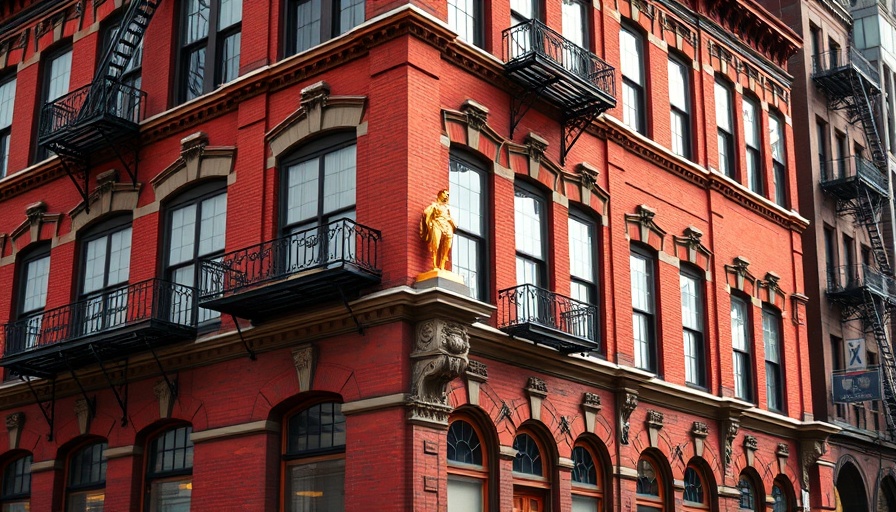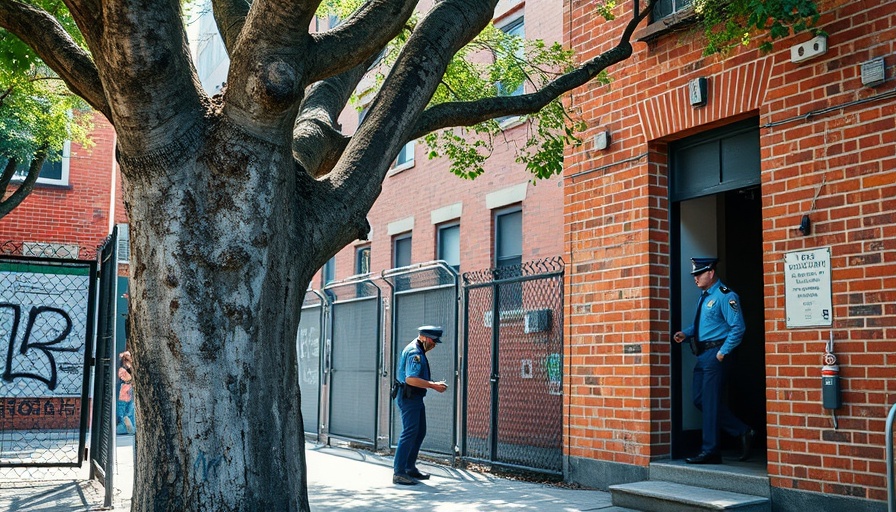
A Symbol of Transformation: From Satire to Luxury
The Puck Building, a historic landmark nestled in New York City’s bustling downtown, marries cultural heritage with contemporary luxury. Initially constructed between 1886 and 1893, this red-bricked architectural marvel once housed Puck Magazine, America’s first humor magazine, known for its sharp cartoons and biting political satire. But today, it stands not just as a relic of the past but as a testament to gentrification and urban transformation.
The Audacious Figure of Puck
The building’s most distinguishing feature is its striking statuary: a golden, mischievous Puck who playfully watches over its entrance. Modeled after Shakespeare’s unbridled fairy, Puck embodies chaos and mischief, aptly inscribed with the line, “What fools these mortals be!” This imagery is a cheeky nod to the building's historical roots in satire and reflects its continuous dialogue with the human experience.
An Architectural Gem Amidst Urban Change
The Puck Building's design reflects the Richardsonian Romanesque style, characterized by dramatic arches and rich red-brick surfaces. Architect Albert Wagner’s vision showcases a melding of styles, with the building maintaining its historical integrity despite later expansions. Today, it serves not only as a symbol of artistic beginnings but also as a luxurious residence, with penthouses blending modern amenities such as wine cellars and private outdoor spaces with the building's original charm. This transformation captures the ongoing evolution of urban landscapes in cities like New York, where history and modernity often collide.
Heritage and the Arts
For lawyers, accountants, and medical professionals—who often find themselves steeped in tradition yet navigating contemporary dynamics—the Puck Building serves as a poignant example of how historical narratives shape current identities. The Puck Magazine's legacy lives on, its commitment to addressing social issues through humor resonating with modern sensibilities. Its artists and illustrators tackled topics like political corruption and societal folly, themes that remain relevant in today’s conversations.
Why the Puck Building Matters
Understanding the Puck Building is about more than appreciating its façade; it’s recognizing how physical spaces embody the stories of communities. The evolution of this building from a publishing site to luxury condominiums exemplifies the changing face of urban real estate. It highlights a broader trend affecting many historic sites nationwide where commercial interests often lead to the revitalization—or at times, the erasure—of cultural legacies.
With its rich history and remarkable transition, the Puck Building invites discussions about urban identity, cultural preservation, and the balance between history and modern living. As we reflect on these shifts, let us consider the impacts on our neighborhoods and the stories we tell.
 Add Row
Add Row  Add
Add 




Write A Comment